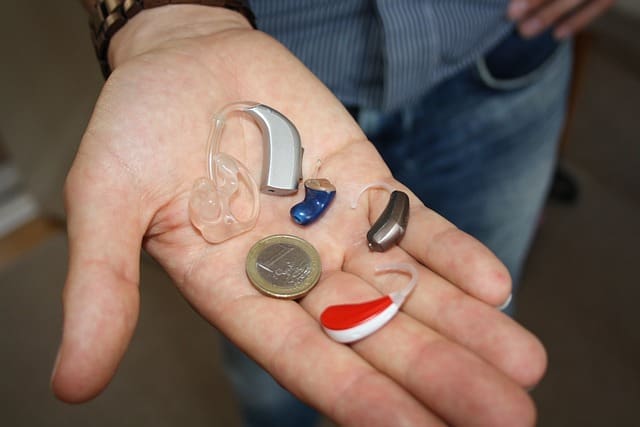Hearing loss can significantly impact one’s quality of life, but choosing the right hearing aid can
make a world of difference. By following these steps and working closely with a professional audiologist, you can make an informed decision to find the right hearing aid that enhances your hearing and improves your overall quality of life.
Here’s a step-by-step guide to help you navigate the process and select the most suitable hearing aid for your needs:
Step 1: Consult with a Professional Audiologist
Before diving into the world of hearing aids, schedule an appointment with a licensed audiologist. A comprehensive hearing test will determine the extent and nature of your hearing loss. The audiologist will provide valuable insights into the specific frequencies affected and guide you toward appropriate solutions.
Step 2: Understand Your Hearing Loss and Lifestyle
Consider the environments in which you most frequently experience difficulty hearing. Different hearing aids cater to various lifestyles, from quiet settings to noisy public spaces. Understanding your specific needs will help narrow down the options.
Step 3: Choose the Best Type of Hearing Aid for Your Needs
Learn about the different types of hearing aids available:
- Behind-the-Ear (BTE): Rests behind the ear and connects to an earpiece.
- In-the-Ear (ITE): Fits entirely in the outer ear.
- In-the-Canal (ITC): Smaller than ITE, it fits partly in the ear canal.
- Completely-in-Canal (CIC): Fits entirely in the ear canal, nearly invisible.
Each type has its advantages and considerations based on factors like comfort, visibility, and the degree of hearing loss.
Step 4: Tech Features in Hearing Aids
Modern hearing aids come with a range of technological features:
- Directional Microphones: Focus on sounds from a specific direction.
- Noise Reduction: Minimizes background noise.
- Bluetooth Connectivity: Connects to devices like smartphones and TVs.
- Telecoil (T-Coil): Improves hearing during phone conversations and in places with loop systems.
Evaluate which features align with your preferences and daily activities.
Step 5: Are they Comfortable?
Comfort is crucial for consistent use. Consider factors like:
- Size and Weight: Opt for a size that suits your comfort preferences.
- Earmold Material: Choose materials that are comfortable for extended wear.
- Adjustability: Ensure the hearing aid can be customized for a secure fit.
Step 6: Battery Life and Maintenance
Understand the battery requirements and expected lifespan. Some hearing aids use disposable batteries, while others have rechargeable options. Consider maintenance needs, including cleaning and changing components.
Step 7: Budget Considerations
Hearing aids vary widely in price. Consider your budget, but also weigh the long-term investment in your overall well-being. Some models offer a balance between affordability and advanced features.
Step 8: Do You Get a Trial Period?
Many providers offer a trial period for hearing aids. Take advantage of this to test the device in various environments and ensure it meets your expectations. During this period, communicate any adjustments needed to enhance performance.
Step 9: Regular Maintenance and Care
Adopt a routine for cleaning and maintaining your hearing aid. Regular check-ups with your audiologist will help address any issues promptly.
Featured Image by Petra Blume from Pixabay




